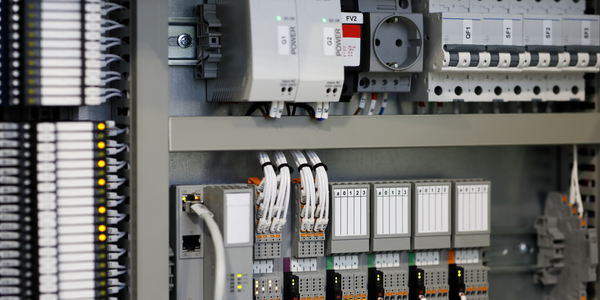Ace Hardware leverages BluJay’s Transportation Management to reduce freight spend
Customer Company Size
Large Corporate
Region
- America
Country
- United States
Product
- BluJay’s Transportation Management
- BluJay's Procurement
- BluDex® transportation lane index
Tech Stack
- ERP
- TMS
Implementation Scale
- Enterprise-wide Deployment
Impact Metrics
- Cost Savings
- Productivity Improvements
- Customer Satisfaction
Technology Category
- Functional Applications - Transportation Management Systems (TMS)
Applicable Industries
- Retail
Applicable Functions
- Logistics & Transportation
- Warehouse & Inventory Management
Use Cases
- Fleet Management
- Supply Chain Visibility
- Predictive Replenishment
Services
- System Integration
- Software Design & Engineering Services
About The Customer
Founded in Chicago in 1924, Ace Hardware Corporation is America’s neighborhood hardware retailer with over 4,000 stores in 50 U.S. states and 60 countries. Ace Hardware stores are supported by 14 world-class distribution centers and six freight consolidation centers, supplying over 65,000 products. Ace has annual sales of over $3.5 billion. The Ace Hardware transportation network consists of 30,000 truckload OTR shipments, 8,000 intermodal shipments, 17,000 Ace fleet shipments, and 2,700 lanes. Ace spends about $50 million in truckload transportation costs annually. More than half of Ace Hardware’s shipments – approximately 65 percent – move as freight collect, meaning Ace pays for the moves.
The Challenge
Ace Hardware’s inbound transportation process was managed manually with spreadsheets, utilizing inefficient processes and producing outdated information. Ace wanted better control of inbound transportation to automate processes, gain efficiencies, understand costs, and identify areas for improvement. Ace was in the process of implementing an enterprise resource planning (ERP) solution, a project that was expected to take three to four years and consume many IT resources. Meanwhile, the company recognized the potential ROI of deploying a transportation management system (TMS) and decided to slate the TMS project in front of the ERP implementation, with the goal of finding a TMS requiring limited IT resources. Ace established a list of goals for a transportation management system: gain visibility into true freight costs, identify and manage inbound freight, centralize freight payment, obtain business intelligence to assess carrier performance, and reduce freight costs.
The Solution
Ace Hardware selected BluJay’s Transportation Management platform to meet its needs and goals. The Transportation Management software transmits Ace orders to suppliers, then selects and tenders to the lowest-cost or best-match carrier. The carrier accepts the load through BluJay’s Transportation Management, where the supplier has visibility to carrier acceptance and schedules an appointment. BluJay’s technology platform gives Ace Hardware visibility to order and load statuses while providing information on true transportation costs. With BluJay’s technology, Ace Hardware gains many capabilities, including automating transportation tasks, leveraging the Global Trade Network to manage inbound shipments for greater freight savings, using BluJay’s Procurement application to automate spot market RFPs, and utilizing the BluDex® transportation lane index to compare freight costs to market. The relationship between Ace Hardware and BluJay Solutions continues to evolve. Along with Transportation Management, Ace uses additional solutions integrated into the platform including BluJay's Procurement, BluDex, and Freight Management. Ace estimates that BluJay Solutions saved the company over $18 million in transportation costs since implementation. The savings come from process efficiencies, such as selecting the right carriers and right modes. In addition, Ace has realized savings from BluJay’s Procurement, leveraging the tool’s real-time market information to negotiate better agreements with carriers.
Operational Impact
Quantitative Benefit

Case Study missing?
Start adding your own!
Register with your work email and create a new case study profile for your business.
Related Case Studies.

Case Study
Improving Production Line Efficiency with Ethernet Micro RTU Controller
Moxa was asked to provide a connectivity solution for one of the world's leading cosmetics companies. This multinational corporation, with retail presence in 130 countries, 23 global braches, and over 66,000 employees, sought to improve the efficiency of their production process by migrating from manual monitoring to an automatic productivity monitoring system. The production line was being monitored by ABB Real-TPI, a factory information system that offers data collection and analysis to improve plant efficiency. Due to software limitations, the customer needed an OPC server and a corresponding I/O solution to collect data from additional sensor devices for the Real-TPI system. The goal is to enable the factory information system to more thoroughly collect data from every corner of the production line. This will improve its ability to measure Overall Equipment Effectiveness (OEE) and translate into increased production efficiencies. System Requirements • Instant status updates while still consuming minimal bandwidth to relieve strain on limited factory networks • Interoperable with ABB Real-TPI • Small form factor appropriate for deployment where space is scarce • Remote software management and configuration to simplify operations

Case Study
How Sirqul’s IoT Platform is Crafting Carrefour’s New In-Store Experiences
Carrefour Taiwan’s goal is to be completely digital by end of 2018. Out-dated manual methods for analysis and assumptions limited Carrefour’s ability to change the customer experience and were void of real-time decision-making capabilities. Rather than relying solely on sales data, assumptions, and disparate systems, Carrefour Taiwan’s CEO led an initiative to find a connected IoT solution that could give the team the ability to make real-time changes and more informed decisions. Prior to implementing, Carrefour struggled to address their conversion rates and did not have the proper insights into the customer decision-making process nor how to make an immediate impact without losing customer confidence.

Case Study
Digital Retail Security Solutions
Sennco wanted to help its retail customers increase sales and profits by developing an innovative alarm system as opposed to conventional connected alarms that are permanently tethered to display products. These traditional security systems were cumbersome and intrusive to the customer shopping experience. Additionally, they provided no useful data or analytics.

Case Study
Ensures Cold Milk in Your Supermarket
As of 2014, AK-Centralen has over 1,500 Danish supermarkets equipped, and utilizes 16 operators, and is open 24 hours a day, 365 days a year. AK-Centralen needed the ability to monitor the cooling alarms from around the country, 24 hours a day, 365 days a year. Each and every time the door to a milk cooler or a freezer does not close properly, an alarm goes off on a computer screen in a control building in southwestern Odense. This type of alarm will go off approximately 140,000 times per year, equating to roughly 400 alarms in a 24-hour period. Should an alarm go off, then there is only a limited amount of time to act before dairy products or frozen pizza must be disposed of, and this type of waste can quickly start to cost a supermarket a great deal of money.

Case Study
Supermarket Energy Savings
The client had previously deployed a one-meter-per-store monitoring program. Given the manner in which energy consumption changes with external temperature, hour of the day, day of week and month of year, a single meter solution lacked the ability to detect the difference between a true problem and a changing store environment. Most importantly, a single meter solution could never identify root cause of energy consumption changes. This approach never reduced the number of truck-rolls or man-hours required to find and resolve issues.



